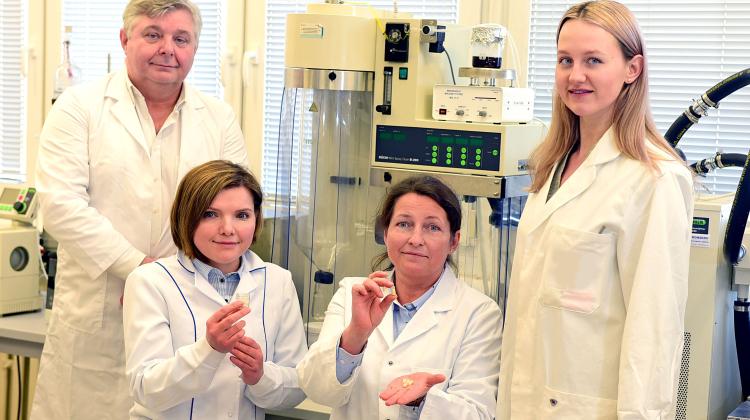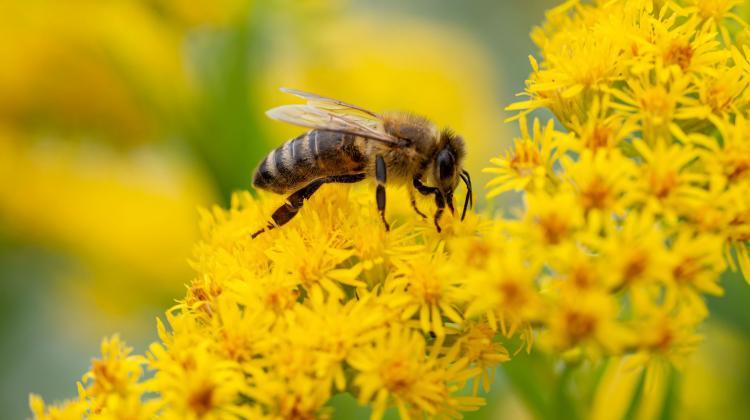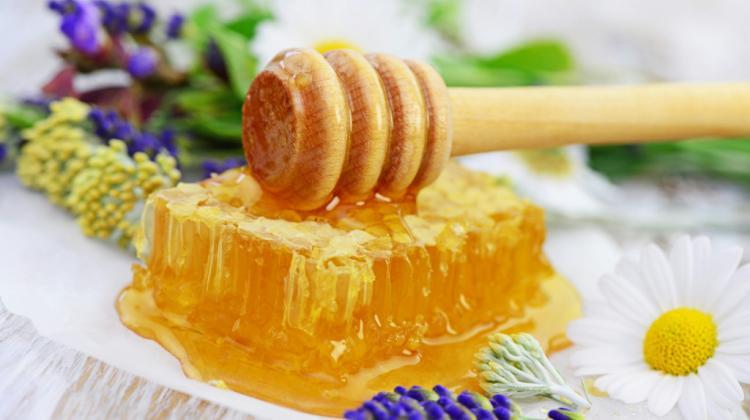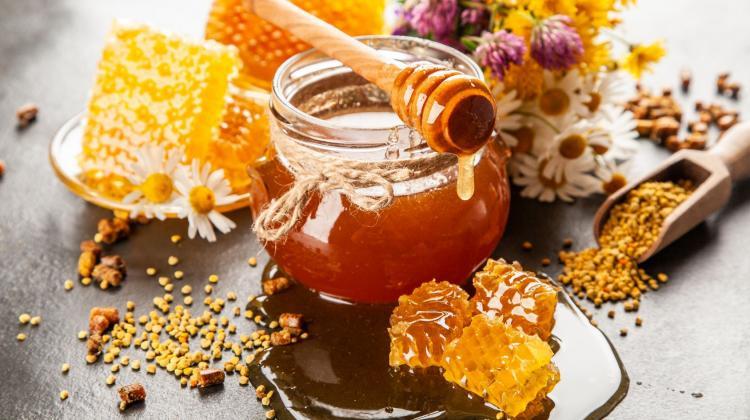Scientists from Lodz University of Technology produce innovative honey microcapsules
 Research team, from left: Dr. Tomasz P. Olejnik, Dr. Karolina Miśkiewicz, Dr. Justyna Rosicka-Kaczmarek, and Dr. Gabriela Kowalska. Credit: Lodz University of Technology
Research team, from left: Dr. Tomasz P. Olejnik, Dr. Karolina Miśkiewicz, Dr. Justyna Rosicka-Kaczmarek, and Dr. Gabriela Kowalska. Credit: Lodz University of Technology
Scientists from the Lodz University of Technology used natural biopolymers to produce innovative honey microcapsules. This method allows to reduce the loss of honey bioactive compounds as a result of action of gastric juice and digestive enzymes.
'An innovative method, used for the first time in the world by researchers from the Lodz University of Technology, allowed to enclose in capsules the most valuable bioactive compounds found in honey. Thanks to the development of this form of their application, it was possible to reduce the loss of these compounds, the cause of which is the destructive effect of gastric juice and digestive enzymes . In vitro studies have shown wide pro-health effects of the microcapsules', the Lodz University of Technology spokeswoman Dr. Ewa Chojnacka told PAP.
Honey is one of the few natural products with high nutritional value and pro-health (antioxidant, immunomodulatory, prebiotic and antimicrobial) properties. A significant part of bioactive compounds, however, does not reach the intestine due to their high lability and degradation caused by low pH of stomach acid
The research team from the Institute of Technology and Food Analysis at the Faculty of Biotechnology and Food Sciences (Dr. Justyna Rosicka-Kaczmarek, Dr. Gabriela Kowalska, Dr. Karolina Miśkiewicz and Dr. Tomasz P. Olejnik) undertook the challenge of preservation of honey in the form of a powder, using encapsulation. To obtain a fixed preparation in the form of microcapsules, the researchers used spray drying.
'We focused primarily on the choice of a suitable encapsulating material, one of the main factors determining the success of the process. We were the first in the world to use natural biopolymers isolated from rye bran and linseed meal. These biopolymers, with a significantly higher bioactive potential in relation to natural honey, constituted an added value to the obtained microcapsules. In addition, the type of medium used significantly reduced its amount in the encapsulate to 17 percent, compared to 50 percent in the previously available products', emphasises Dr. Justyna Rosicka-Kaczmarek.
The microcapsules will be used as a controlled delivery system to the intestine for bioactive compounds. Honey microcapsules have been tested in vitro.
"The results of the analyses showed that phenolic compounds, very useful for the body, in the obtained honey powder have on average 85 percent higher biostabilibility during simulated digestion in the stomach, which translates into their higher bioavailability in the small intestine. The innovative process of encapsulation allowed to release two to ten times more bioactive compounds in the small intestine compared to the amount of compounds released from honey in its natural form', the researcher explaines.
She adds that honey microcapsules can also be used with good results as a preparation that supports wound healing, or a nutraceutic with confirmed immunomodulatory (regulating the immune response of the body) and prebiotic properties, with the possibility of a targeted, controlled release in the intestine.
The newly developed method for honey preservation through its encapsulation is protected by a patent application. The team from the Lodz University of Technology will also investigate the possibilities of encapsulation of other bee products: royal jelly, bee pearl, bee venom and other raw materials with a high bioactive potential. (PAP)
Author: Agnieszka Grzelak-Michałowska
agm/ ekr/ kap/
tr. RL
Przed dodaniem komentarza prosimy o zapoznanie z Regulaminem forum serwisu Nauka w Polsce.

















